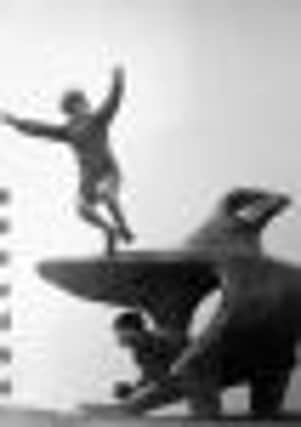The joys of sculpture are shared at Leamington art gallery


British mid-century sculpture was dominated by Barbara Hepworth and Henry Moore. But Moore is the significant influence here, even though Bridgeman turned his back on the chance to act as his assistant in the 1950s, opting instead to head the sculpture school at the Birmingham Art Institute.
He may have rejected the man but he didn’t reject his approach to sculpture, because echoes of the master’s stylisation of the human figure seem to haunt the work. Best of these, and partly because they reach beyond the ground-hugging parameters of Moore’s work, is a set of three standing figures whose ethereal, elongated forms reach inexorably skywards. Classical Greek sculpture is more of a source here and Degas an unmistakable reference point for the numerous small figures that populate the main body of the show.
Advertisement
Hide AdAdvertisement
Hide AdHe was also a demonstrably prolific draftsman. His drawings and other works on paper are uncompromisingly modernist. The approach is satisfyingly personal - but always experimental.
He was clearly affected by his experience as a stretcher-bearer during the London blitz. His drawings of empty stretcher-beds reflect this. These are hard-won images whose authenticity is derived from experience. His Torture Wall, assembled here for the first time is a more ambitious pacifist statement about the horrors of war, but it doesn’t quite work as a visual entity. Its far-reaching implications are clear enough but it seems incomplete and curiously unresolved.
But everything comes together in his less demanding playground series, where Moore’s influence is finally absorbed in a set of interactive works that represent a convincing demonstration of the joyous use of abstract sculptural form.
Peter McCarthy